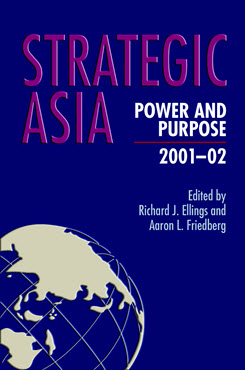Introduction (Strategic Asia 2001-02)
Over the course of the next decade, and probably well beyond, American diplomats, intelligence analysts, military planners, and strategists are going to find themselves increasingly preoccupied with events in Asia.
Over the course of the next decade, and probably well beyond, American diplomats, intelligence analysts, military planners, and strategists are going to find themselves increasingly preoccupied with events in Asia. This is not to say that other parts of the world will dwindle to insignificance. The United States will continue to have strong and, in certain respects, growing commercial, diplomatic, and humanitarian interests and concerns in Europe, the Middle East, Africa, and Latin America. But it is in Asia that America will face both the most profound strategic challenges and the most substantial opportunities.
For much of the past century U.S. foreign policy and military strategy were largely, albeit never exclusively, focused on Europe. In the century that has just begun, they will come to be centered much more heavily on Asia. This change in emphasis is not being driven by transitory tendencies or passing enthusiasms, but rather by deep, long-term shifts in the global distribution of wealth and power. The growing attention that American strategists will be compelled to devote to Asia in the years ahead reflects, in short, the reality of Asia’s rise.
Strategic Asia
The Strategic Asia annual edited volume incorporates assessments of economic, political, and military trends and focuses on the strategies that drive policy in the region. Learn more about Strategic Asia.


